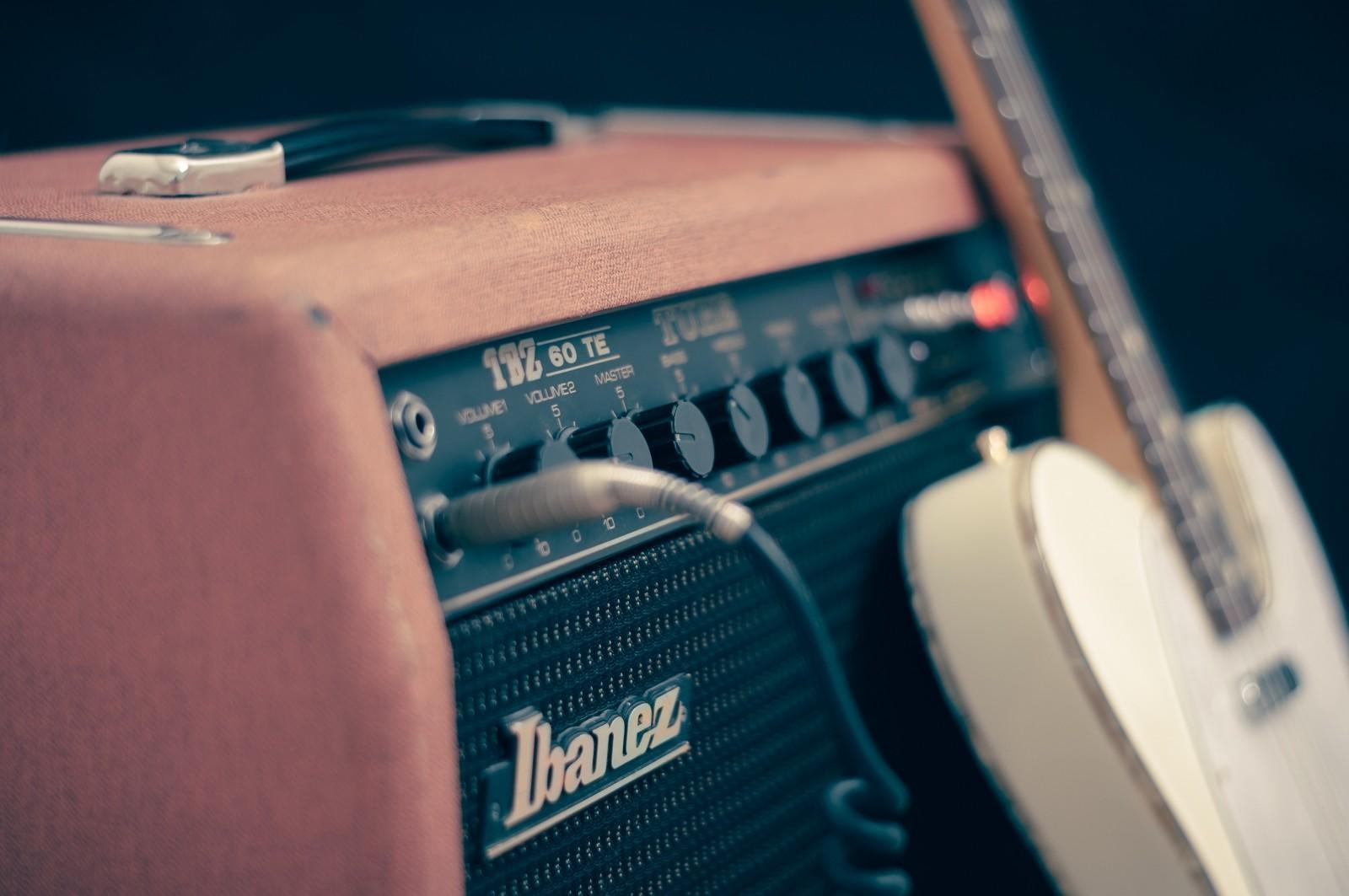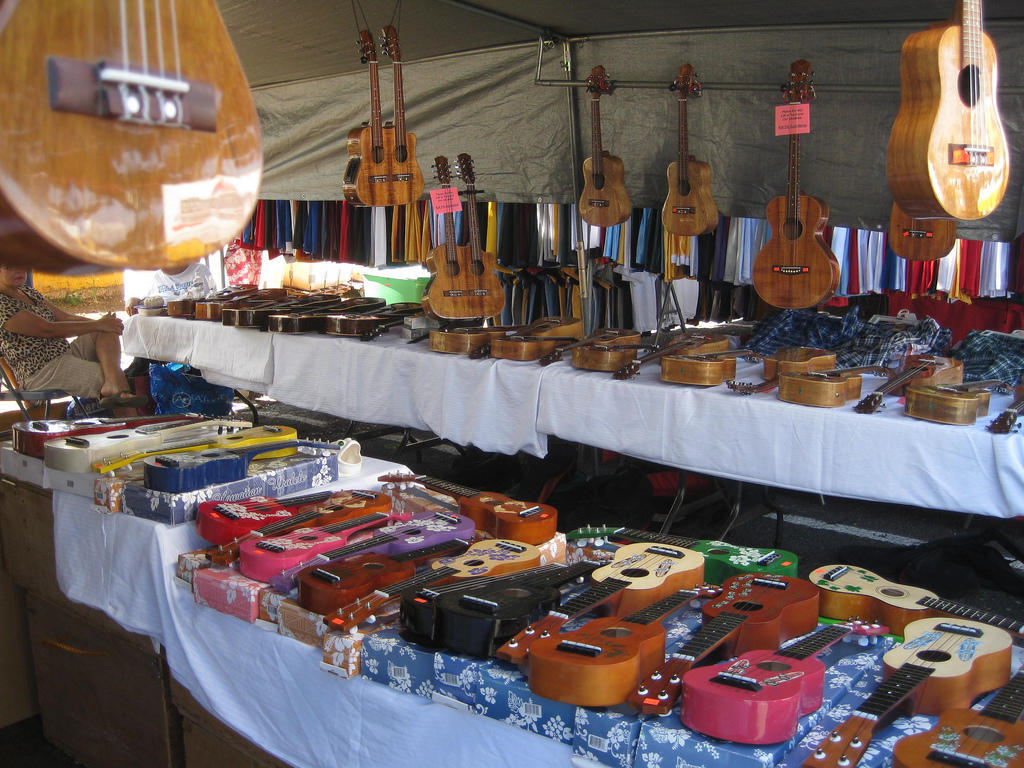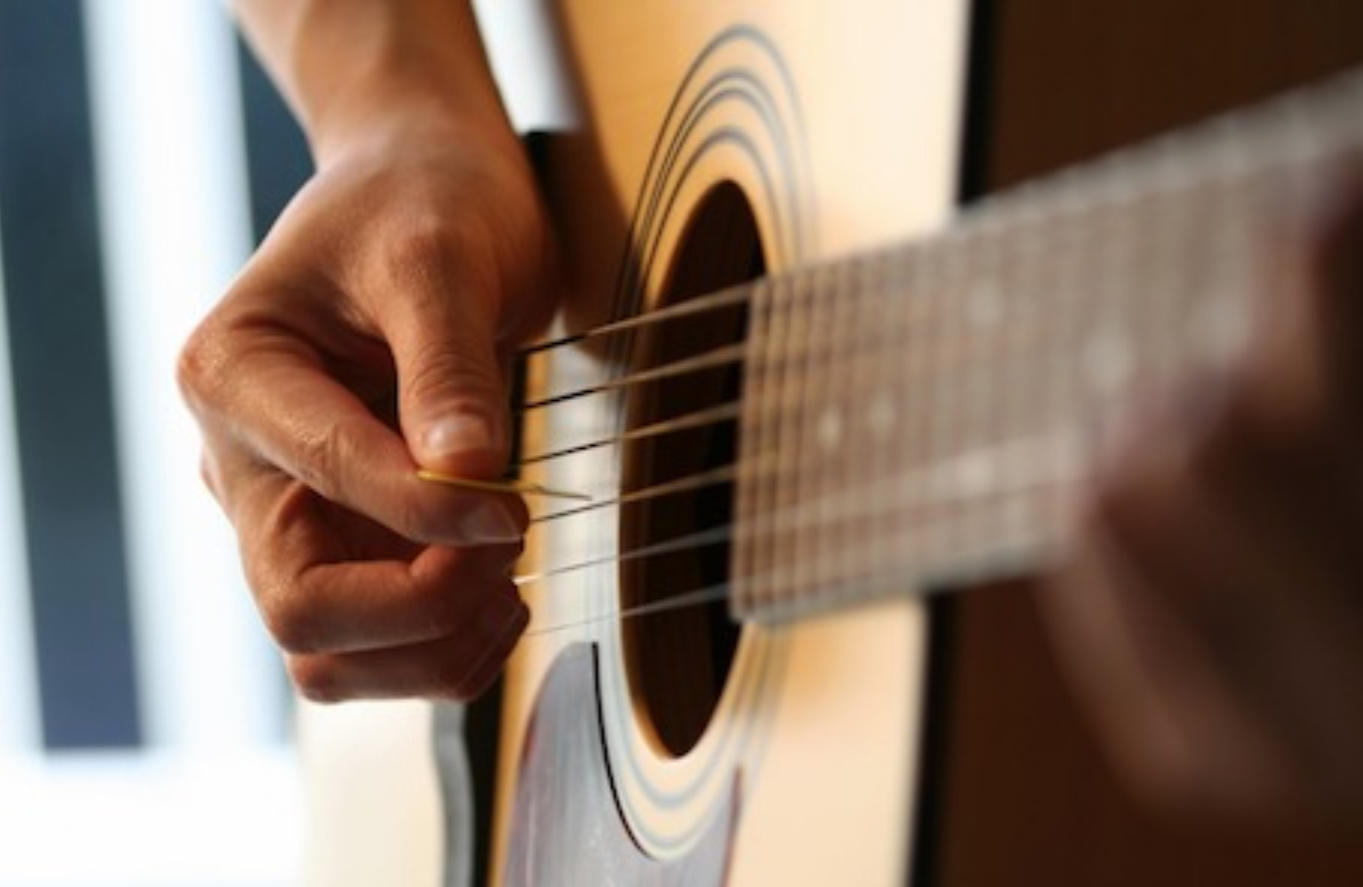Buying a new instrument is not the priority of all guitar players and it is sometimes difficult to put money aside for such purchases.
Whether it’s an acoustic guitar, an electric guitar, a folk guitar, an electro-acoustic guitar, a ukulele, a mandolin, a bass guitar, a gypsy jazz guitar, or an acoustic bass, they're all going to cost a little. And add to this the necessary accessories - a gig bag, tuners, spare guitar strings, a guitar amplifier perhaps - and the prices can look overwhelming.
Daily expenses quickly take priority and it’s difficult to keep the objective of making music in mind.
However, has it been a while since you’ve been wanting to buy the latest Fender? Do you have your eye on a tasty dreadnought acoustic-electric? Are you looking for guitar brands that are actually affordable?
The price of guitars varies according to several criteria. Depending on whether you’re a beginner, intermediate, or experienced player, your expectations will differ. So sometimes you might find a way to buy a guitar that’s less expensive than you thought. They do exist, and you don't have to sacrifice playability, the quality of pickups or fretboard, to get a guitar that you like for a decent price.
Depending on what you want and the way you buy it, you can find the guitar of your dreams that also works with your budget. Fender, Ibanez, Gibson, Telecaster, Stratocaster, Gibson Les Paul, Yamaha… There’s tons of choice!

What To Look For When Buying A Guitar
When buying a guitar, there are several factors to consider to ensure you make the right choice. Here are some key things to look for:
- Budget: Determine your budget range before starting your search. Guitars can vary widely in price, so having a clear budget will help narrow down your options.
- Type of Guitar: Decide which type of guitar you want based on the style of music you want to play. Common types include acoustic, electric, classical, and bass guitars. Each type has its own sound and characteristics.
- Playability and Comfort: It's essential to choose a guitar that feels comfortable to play. Consider factors such as the size and shape of the guitar's body, the thickness and width of the neck, and the overall weight. Try holding and playing different guitars to find one that suits your playing style and feels comfortable in your hands.
- Sound and Tone: The sound and tone of a guitar are crucial factors. Play various guitars and listen to the sound they produce. Consider the type of wood used in the guitar's construction, as it can affect the instrument's tone. Additionally, consider the pickups and electronics if you're purchasing an electric guitar.
- Quality and Craftsmanship: Examine the overall build quality and craftsmanship of the guitar. Look for solid construction, properly aligned components, and a well-set neck. Check for any visible defects or flaws that may affect the guitar's performance or durability.
- Brand and Reputation: Consider the reputation and reliability of the brand you're considering. Established brands often have a track record of producing high-quality guitars, while lesser-known brands may offer more affordable options. Read reviews and seek recommendations from experienced guitarists to help you make an informed decision.
- Used vs. New: Decide whether you want to buy a new guitar or consider purchasing a used one. Used guitars can offer good value for money, but be sure to inspect them for any damage or excessive wear. New guitars typically come with warranties and guarantees.
- Accessories: Consider any additional accessories you may need, such as a guitar case, strap, picks, tuner, and amplifier (for electric guitars). Factor in the cost of these accessories when considering your overall budget.
- Try Before You Buy: Whenever possible, play the guitar before making a purchase. Visit music stores and spend time testing different guitars to get a feel for their playability, sound, and overall comfort. You may also be able to sample different guitars in guitar classes, provided by your teacher.
- Personal Preference: Ultimately, choose a guitar that you connect with and enjoy playing. Everyone has different preferences when it comes to sound, feel, and aesthetics, so trust your instincts and select a guitar that resonates with you.
By considering these factors, you can make a more informed decision when buying a guitar that matches your playing style, budget, and personal preferences.
What Is an Inexpensive Guitar?
First of all, it’s important to ask yourself what a cheap guitar is. To do so, we need to take a look at the market prices.
Whether it’s on the Internet or in music stores, the market prices are roughly the same. But the service can vary because in a store you have the advantage of obtaining advice from the seller.
The average price of a classical guitar in India can vary depending on various factors such as the brand, quality, materials used, and any additional features. Generally, you can find classical guitars in India ranging from around INR 3,000 to INR 30,000 or more.
At the lower end of the price range, you can find entry-level or beginner classical guitars that are suitable for learners or those on a tighter budget. These guitars may have laminated wood construction and basic features. They will be best for your beginner guitar classes.
In the mid-range, you can find classical guitars with better craftsmanship, solid wood tops, and improved sound quality. These guitars are suitable for intermediate players or those seeking better performance.
Towards the higher end of the price range, you can find high-quality classical guitars with solid wood construction, better tonewoods, and superior craftsmanship. These guitars are typically preferred by professional players and enthusiasts who value excellent sound and playability.
These prices are often ideal when you’re starting out. There's really no need to invest in an expensive guitar if you are a beginner guitar player. Perhaps you will only buy a guitar for professional guitarists a few years down the line!
The lowest average prices for electric and acoustic guitars are also around 180 dollars. This sort of guitar for beginners usually comes in a guitar package with other accessories.
You could also look for guitars in the price range of 350 to 600 dollars. These will usually come with a better quality of fingerboard - with the fret configuration and intonation set up better - whilst they also come with better guitar pickups, as well as a better-composed guitar body and preamp. It is also more judicious to pay a higher price for a guitar that will last all your life, or nearly.

When you buy a guitar, whether it’s a folk, electric, or classical guitar, you will also need to buy the accessories. Amplifier, guitar case, pick, strap, tuner, and cap will all be useful for you as you learn the guitar.
As we mentioned above, you might want to check out a guitar pack. They group the essentials for a guitarist into one single purchase.
You can also invest in scorebooks or tablatures. In every music store, you can find lessons for each style: French variety, gypsy jazz, flamenco, hard rock, folk, traditional, pop, jazz…
Ask the seller or the guitar maker about the best books.
And don’t forget to buy a set of guitar strings - either nylon strings or steel strings - with it. You can then replace them at home. That way you can be sure of the quality and the acoustics of your instrument.
Finally, you should budget for guitar lessons... unless you are still in the experimental stage, reading articles about aspects of guitar learning.
How to Choose Your Type of Guitar?
Are you ready to buy your guitar? Is your bank account about to burst? But how to choose the right guitar?
Answering that latter question requires simply your own reflection. It’s important to really know yourself and to know what use you hope to get out of the guitar. What sort of music are you intending to play on your musical instrument? What aesthetic do you want? Are you serious about going all the way with the instrument, or is this first guitar just for you to see what it is like?
Be honest with yourself and don’t overestimate your level. The inverse is also true. Don’t choose a guitar because it’s less expensive than the one you really want. Choosing a guitar takes time so don’t rush.
Guitars for beginners are generally less expensive because they have fewer finishing touches (varnished wood) and sometimes fewer options (for example, vibrato on electric guitars). However, guitars for experienced players are a bit less accessible but are slightly more sturdy. They are more of a long-term investment.
Do you want to play on stage and become the next rock star?
That will require a bit more of an investment. To play on stage, your instrument will need an amp. For an electric guitar, the amp needs to be bought in addition to the guitar. The prices vary between 120 and 600 dollars, depending on the effects you want.
The amplifier is also useful if you choose to buy an electro-acoustic guitar, which has an internal microphone. You will need to connect your guitar to the amp with the help of a jack plug.

As for classical guitars, very few are equipped with an internal microphone. That can ruin the guitar and so very few musicians risk it.
It’s better to buy an external microphone and to install it near the sound box.
No matter what, ask the advice of professionals to steer you towards the right choice, the one that will be best adapted to you. For example, you can speak with your guitar teacher or with a specialized seller.
A specialized seller can also advise you on the making of his or her products and about guitar classes near me.
Fabrication plays an essential role in the price depending on the wood used (spruce, mahogany, maple, cedar, rosewood, cypress, ebony) and the design of the guitar.
To avoid letting yourself be tempted by a guitar, decide your budget before entering a store. Otherwise, you might quickly be enticed by one of the high-end models that isn’t necessarily suited for your practice.
So take the time to educate yourself in order to better know what you need. Most importantly, don’t rush. Even if the temptation is great, reflection is just as important.
And don't be too eager to learn to play quickly; it is much better to learn thoroughly than fast!
Buying a New Guitar vs Used Guitar For Your First Guitar
When considering your first guitar, you have the option to buy either a new guitar or a used guitar. Here are some factors to consider when deciding between the two:
Buying a New Guitar:
- Condition and Warranty: A new guitar will be in pristine condition without any wear or damage. It will typically come with a warranty, giving you peace of mind regarding any potential defects or issues.
- Customization: Buying a new guitar allows you to choose the specific model, brand, color, and features that suit your preferences. You have the freedom to personalize your instrument according to your taste and style.
- Latest Features: New guitars often incorporate the latest technology and advancements in design and construction. They may have improved playability, sound quality, and built-in electronics (if applicable).
- No Previous Ownership: With a new guitar, you won't have to worry about the instrument's history or potential hidden problems from previous owners.
Buying a Used Guitar:
- Cost Savings: Used guitars are generally more affordable compared to new ones. You can find a wider range of options within your budget, including high-quality instruments that may have been out of your price range if purchased new.
- Vintage and Unique Models: If you're interested in vintage or discontinued models, buying used opens up the opportunity to find rare and unique guitars that may no longer be available as new.
- Pre-Played and Broken-In Feel: Some players prefer the feel and sound of a guitar that has been played-in over time. Used guitars often have a certain character and tone that can be desirable.
- Established Reputation: Older, used guitars from reputable brands have stood the test of time, indicating their quality and durability. You can research and find reviews or recommendations specific to the particular used guitar you are considering.
Considerations for both options:
- Playability and Condition: Whether you choose a new or used guitar, it's important to try it out or have it inspected to ensure it is in good playing condition. Playability, comfort, and overall condition should be your primary concerns.
- Research and Inspection: When buying used, research the specific model, check its history, and carefully inspect it for any damage, wear, or necessary repairs. If possible, have a knowledgeable guitarist or a luthier accompany you to evaluate the used guitar.
Ultimately, the choice between a new or used guitar depends on your budget, preferences, and priorities. If you prioritize warranty, customization, and the latest features, a new guitar may be the right choice. However, if cost savings, vintage appeal, and unique character are more important to you, a used guitar could be a great option.
Find online guitar classes for beginners.

First of all, choose a good website. Do research on forums that you can find on the subject. It will then be easy to get an idea about such and such a website before you decide. Numerous unfortunate experiences will serve to alert you.
Have you finally found a site that seems trustworthy?
Take a look at the delivery method.
Where is the guitar coming from? Will the package be protected? Is it trackable?
Choose sites offering a guarantee on the guitar. It will be put you more at ease. In case of damages in transit or a manufacturing defect, it will be easier for you to be reimbursed. And above all don’t forget to read the terms and conditions. Yes, those tiny words were written where no one sees them!
If you are not sure about the model you have chosen, look at the numerous YouTube videos of musicians showing each type of guitar. There are many equipment tests done via video.
You can also learn to tune your electric guitar online.

So try to arrive very early at these little amateur shops to discover the good deals before everyone else.
Have you finally found the guitar you need?
Join guitar classes in Bangalore.
Now it’s time to try it. Since you are there in person, ask the owner if you can hold it and maybe even strum a few chords. You will need to verify that the guitar does not have signs of any damage or cracks.
Make sure to look at the handle. It should absolutely not be warped. That can happen if a guitar has remained without cords for too long. Without pressure exerted on the handle, it gently starts to slacken.
Beyond its physical appearance, ask also about the history of the object. The owner should explain to you why he or she is selling it and whether the instrument has any defects.
If everything seems alright to you, all you have to do then is give him or her your best smile and negotiate the price!
You might even sing while you play, to show your appreciation for scoring this great deal!
Now discover how you too can learn to play the guitar one-handed...















